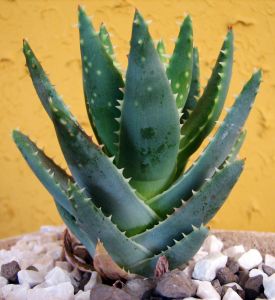An Aloe Vera Juice Site for the Hispanic Market?
Aloe Vera is a Hispanic folk remedy that has found its way into other cultures and into many skin creams. It has a strong soothing effect when applied directly from cut leaves. A bit gooey at first but oh so refreshing.
Aloe Vera is used to treat cuts and burns on the skin, it is believed to have skin rejuvenation powers and when in liquid form, it helps boost the immune system.
I still remember the words of one american surgeon that advised me to drink Aloe Vera juice during the 10 days before a surgery. How’s that for culture penetration?
Now US Farms, Inc., announced the launch of its new Hispanic focused web site http://www.jugodealoevera.com, which will operate as a division of US Farms Inc.
US Farms Aloe Vera Juice retails for $14.95 per bottle or wholesales for $89.95 per case (12 bottles). US Farms Aloe Vera Juice can be ordered online with Visa, Master Card, Discover, or American Express or by calling their customer service.
US Farms Aloe Vera Juice is an exclusive proprietary formulation which includes: Aloe Vera Juice (Barbadensis Miller), White Grape, Cranberry, Concord Grape and Black Cherry juice concentrate which are potent anti-oxidants and phyto-nutrients.
If you are interested in sampling their new and exciting Aloe Vera Juice will be offered for a limited time, a free 32 oz. bottle of US Farms Aloe Vera juice. Visit their website at http://jugodealoevera.com/sample.html
About US Farms Aloe Vera Juice
What sets US Farms Aloe Vera Juice apart from others is our farm fresh crop. Our Aloe Vera is hand harvested and cultivated using the best farming practices to ensure the highest quality. We blend our high-grade Aloe Vera with just the right amount of all-natural fruit juices to give it a great taste.
Aloe Vera has been known for centuries and used by people thought out the world. Aloe Barbadensis Miller (leaf inner gel) contains a wide variety of nutrients, including vitamins, minerals, and amino acids. These nutrients, along with the phyto-nutrients in the fruit juices, as well as the anti-oxidants they contain, they say makes their Aloe Vera juice the perfect complement to an active lifestyle.
We know all of us can enjoy the rewards of adding Aloe Vera Juice to our diets. Will we?
Source: US Farms, Inc.




